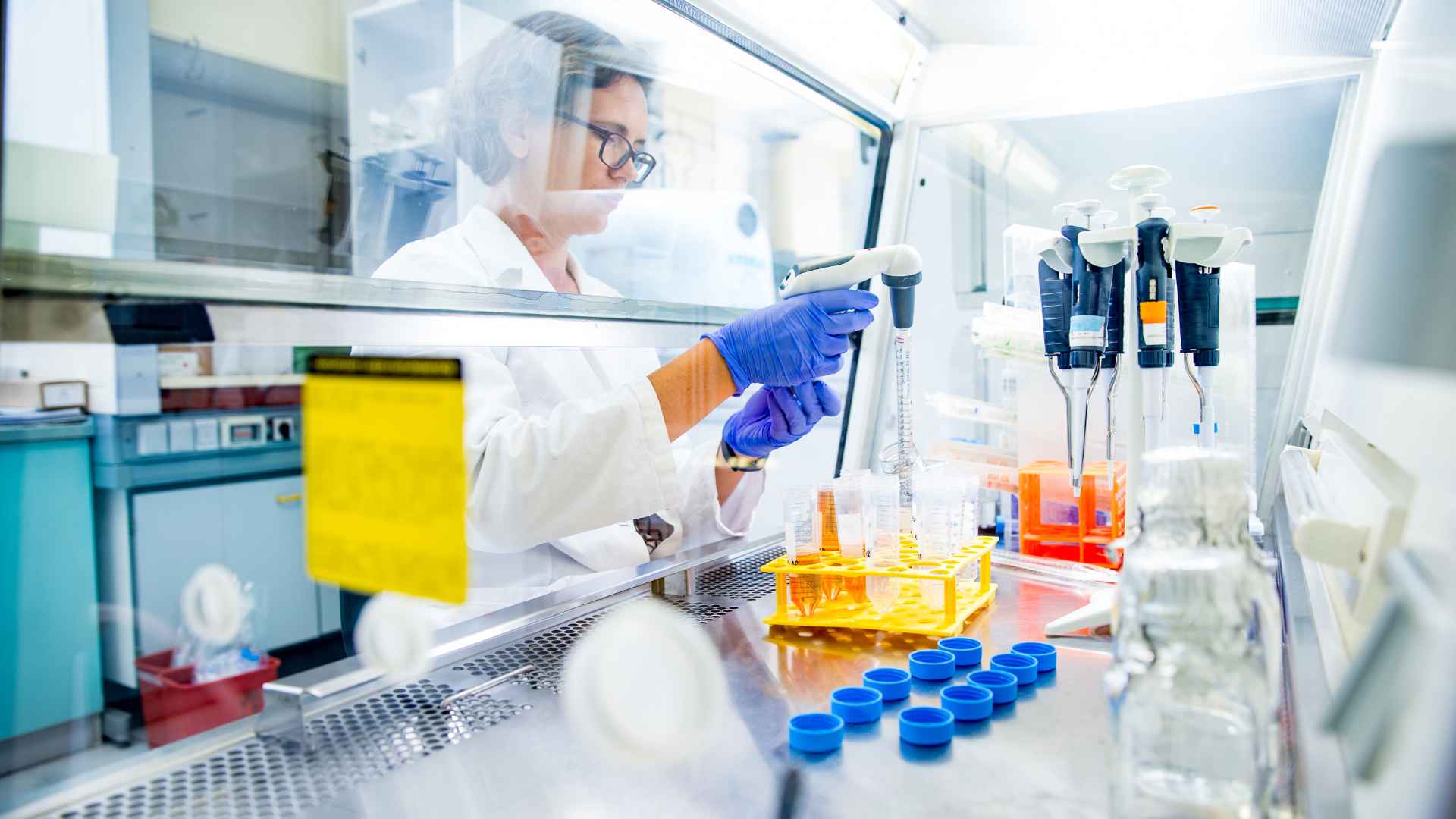In the bustling world of molecular biology, protein assays stand as critical tools for researchers. They’re the gatekeepers, offering insights into protein concentration, purity, and function. Whether it’s for drug discovery, disease diagnosis, or simply understanding cellular mechanisms, protein assays are indispensable.
Exploring through the various types of protein assays can be akin to exploring a dense forest. Each method has its unique advantages and challenges, tailored for specific research needs. From the classic Bradford assay to the sophisticated mass spectrometry, scientists are equipped with an arsenal to decode the mysteries of proteins.
The Importance of Protein Assays in Molecular Biology
In the area of molecular biology, protein assays stand out as indispensable tools for researchers, offering insights that stretch across various applications from drug discovery to diagnostic processes. These assays provide a lens through which scientists can quantitatively analyze proteins, unraveling complexities that lie at the heart of cellular processes and disease mechanisms.
Protein assays, by their very nature, serve as a critical foundation in biotechnological research, where understanding protein concentration, purity, and activity is paramount. This elucidation is not just a matter of academic interest but drives the practical aspects of therapeutic development and biomedical research. In a sector where precision and reliability are non-negotiable, the choice of a protein assay technique can significantly influence the trajectory of a study.
Da-Ta Biotech, a leader in cell-based assay services, leverages this foundational role of protein assays in its extensive R&D efforts. The company’s diverse array of in-house testing capabilities, including a broad spectrum of human and rodent cell lines alongside disease models, places it at the forefront of biotechnological innovation. Models for screening anti-cancer drugs and measuring wound healing rates exemplify the practical applications of protein assays in evaluating drug efficacy and understanding biological responses.
Also, Da-Ta Biotech’s approach, which encourages researchers to either use its robust protocols or adapt their SOPs/protocols, underscores the versatility and adaptability of protein assays in research settings. This flexibility, coupled with the expertise of Dr. Rinat Borenshtain-Koreh and her team, ensures that protein assays are not just seen as a mere step in the research process but as a collaborative journey towards discovery and beyond.
As protein assays continue to evolve, their importance in molecular biology remains undiminished. They’re not just tools but beacons that guide scientists through the dense forest of biological complexities, illuminating the path towards groundbreaking discoveries and innovations. With advancements in assay techniques and technologies, the potential applications and insights derived from protein assays are bound to expand, further cementing their status as pillars of molecular biology and biotechnological research.
Understanding Protein Concentration Measurement Techniques
Protein assays are indispensable tools in molecular biology and biotechnology, offering a precise way to determine the concentration of proteins in a sample. This process is critical for various applications, such as drug discovery, disease diagnostics, and the study of cellular processes. There are several techniques utilized to measure protein concentration, each with its own advantages and limitations.
One popular method is the Bradford Protein Assay, utilizing Coomassie Brilliant Blue dye, which binds to proteins and results in a color change proportional to the protein concentration. This method is renowned for its simplicity and rapidity, making it ideal for high-throughput screening in environments such as Da-Ta Biotech.
Another widely used technique is the Bicinchoninic Acid (BCA) Assay. Similar to the Bradford assay, the BCA assay measures the reduction of Cu^2+ to Cu^1+ in the presence of proteins, leading to a colorimetric change. This method offers the advantage of being less susceptible to interference by common laboratory compounds compared to the Bradford assay.
The Lowry Protein Assay, combines the principles of the Biuret reaction with a Folin-Ciocalteu reagent reducing step, providing increased sensitivity. Although it’s more labor-intensive, this assay is highly precise for protein concentration determination in complex samples.
For researchers at Da-Ta Biotech, choosing the right protein assay technique can significantly impact their research outcomes. The company’s in-house testing capabilities cater to a broad array of studies, such as anti-cancer drug screening, where accurate measurement of protein concentration is paramount.
Also, with the guiding expertise of Dr. Rinat Borenshtain-Koreh and her team, Da-Ta Biotech ensures that each research project harnesses the optimal protein assay method suited to its specific needs, securing the accuracy and reliability of the results achieved. This adaptability not only fosters innovation but also streamlines the path from discovery to application in real-world scenarios, highlighting the pivotal role of protein assays in advancing biotechnological research.
Exploring Different Protein Purity Assays
Protein assays are pivotal in evaluating the effectiveness of biotechnological processes and products. Da-Ta Biotech, a leader in cell-based assays, employs a variety of protein purity assays to ensure their biotechnological advancements meet the highest standards. This section delves into the different protein purity assays that are instrumental in the industry.
Bradford Protein Assay
A cornerstone in protein quantification, the Bradford Protein Assay is renowned for its simplicity and rapid execution. It relies on the binding of Coomassie Brilliant Blue dye to protein molecules, causing a shift in the dye’s absorption maximum. The intensity of this color change is directly proportional to the protein concentration. Da-Ta Biotech utilizes this method extensively due to its compatibility with high-throughput screening applications.
Bicinchoninic Acid (BCA) Assay
The BCA Assay, another cornerstone in protein quantification, is favored for its compatibility with samples that contain detergents. This method involves the reduction of Cu^2+ to Cu^1+ by protein in an alkaline medium, followed by the formation of a purple-colored complex by bicinchoninic acid with Cu^1+. This assay’s sensitivity and reliability make it a preferred choice for assessing protein purity in various applications.
Lowry Protein Assay
Building on the principles of the Biuret reaction, the Lowry Protein Assay is revered for its superior sensitivity. This assay combines the Biuret reaction with a Folin-Ciocalteu reagent reaction, enhancing its ability to detect minute protein concentrations. Da-Ta Biotech leans on this method for applications requiring the utmost precision in protein quantification.
These protein assays, among others, are integral to the rigorous testing protocols at Da-Ta Biotech. They cater to a wide range of research needs, from drug discovery to disease diagnostics. The intricate selection of the most suitable protein assay, guided by the experienced R&D team led by Dr. Rinat Borenshtain-Koreh, underscores Da-Ta Biotech’s unwavering commitment to advancing biotechnological research with accuracy and reliability at the forefront.
Western Blot
Da-Ta Biotech Western system enabling the specific detection of a specific protein by running the sample on an SDS gel, separating the bands by their electric charge and molecular weight. The use of a set of primary and secondary antibodies for the specific detection of the desired protein enabled our researchers to advance by assessing the content of the protein in the sample and paving the way for the proof of concept.
Functional Protein Assays: Unraveling Cellular Mechanisms
Da-Ta Biotech leverages functional protein assays as pivotal tools in dissecting complex cellular mechanisms. These assays are not merely about quantifying protein concentration; they extend to evaluating the biological activity of proteins within various cellular contexts. This insightful approach allows researchers to not only measure but also understand how proteins interact within the cellular environment, offering a deeper jump into the mechanistic pathways that drive biological processes.
When exploring for an active protein such as an enzyme, Kinetic studies are of choice. In those studies, the sample is incubated with a substrate that is also an indicator so the following co-incubation, allowing time, temperature and other surrounding parameters such as pH and coenzymes, the product (reporter) will report the enzyme concentration.
The application of functional protein assays at Da-Ta Biotech encompasses several cutting-edge techniques designed to provide comprehensive insights into protein function. Key among these is the enzyme-linked immunosorbent assay (ELISA), critical for detecting and quantifying specific proteins and their activity levels. This method’s inherent sensitivity and specificity make it an invaluable asset in the assessment of protein interactions and functions.
Also, Da-Ta Biotech employs cell-based assays to investigate cellular responses to various stimuli, including pharmaceuticals, thereby offering a dynamic view of protein activity in living cells. These assays are instrumental in the development and optimization of therapeutic agents, with particular emphasis on assessing drug efficacy and safety. The availability of more than two dozen human and rodent cell lines, along with diverse disease models like those for anti-cancer drug screening and wound healing rates, underscores the breadth of Da-Ta Biotech’s testing capabilities.
Through the adept guidance of Dr. Rinat Borenshtain-Koreh and her team, researchers can investigate into the complexities of protein function with unparalleled precision. By integrating these functional protein assays into their research workflows, scientists can elucidate the roles that specific proteins play in disease pathogenesis and cellular health, advancing our collective understanding of biological systems.
Da-Ta Biotech’s commitment to providing robust, state-of-the-art protein assays ensures that researchers have access to the tools necessary for making significant strides in biotechnological research and development. By combining detailed quantitative analysis with functional assays, Da-Ta Biotech stands at the forefront of uncovering the intricate dance of proteins within the cellular world, propelling the biotechnology industry forward.
Advancements in Protein Assays: From Bradford to Mass Spectrometry
The field of protein assay technology has experienced a remarkable evolution over the past few decades. This journey, from traditional colorimetric assays such as the Bradford protein assay to sophisticated mass spectrometry techniques, exemplifies the strides made in analytical methodology, enhancing the precision and breadth of protein analysis.
The Bradford Protein Assay, developed in the mid-20th century, became a staple due to its simplicity and quick turnaround time. It relies on the binding of Coomassie Brilliant Blue dye to proteins, resulting in a visible color change that can be quantitatively measured. But, the technique has limitations, including sensitivity to buffer components and a relatively narrow dynamic range.
In response to these limitations, scientists sought more versatile and precise methods, ushering in the era of mass spectrometry (MS) for protein analysis. Mass spectrometry stands out for its unparalleled accuracy, sensitivity, and the ability to analyze complex protein mixtures. Through techniques such as Matrix-Assisted Laser Desorption/Ionization (MALDI) and Electrospray Ionization (ESI), MS provides detailed information on protein identity, structure, and quantity.
Mass spectrometry’s adaptability to a wide range of applications, from protein identification to post-translational modification analysis, represents a significant leap forward. Its integration into proteomics has enabled a deeper understanding of cellular mechanisms and disease pathways, going beyond mere protein quantification to explore their functional dynamics.
- Key Benefits of Mass Spectrometry in Protein Assays:
- Unparalleled accuracy and sensitivity
- Ability to analyze complex mixtures
- Provides information on protein identity, structure, and quantity
As Da-Ta Biotech continues to lead in the provision of advanced protein assays, including cell-based assays that leverage the latest technological developments, researchers are equipped with the tools necessary for breakthrough discoveries. With a comprehensive range of services from proof-of-concept to efficiency demonstrations, and a team led by experienced professionals like Dr. Rinat Borenshtain-Koreh, the future of protein assay technology appears bright and boundless.
Conclusion
The journey of protein assay technology has been marked by significant advancements transforming how scientists analyze and understand proteins. With the shift from the Bradford assay’s limitations to the sophisticated capabilities of mass spectrometry, researchers now have the tools to investigate deeper into protein complexities. Da-Ta Biotech, under Dr. Rinat Borenshtain-Koreh’s guidance, remains at the innovation forefront. Their development of cell-based assays and other cutting-edge techniques continues to enrich our knowledge of cellular processes. This evolution underscores the critical role of protein assays in advancing biotechnological research and our broader understanding of life’s molecular underpinnings.






